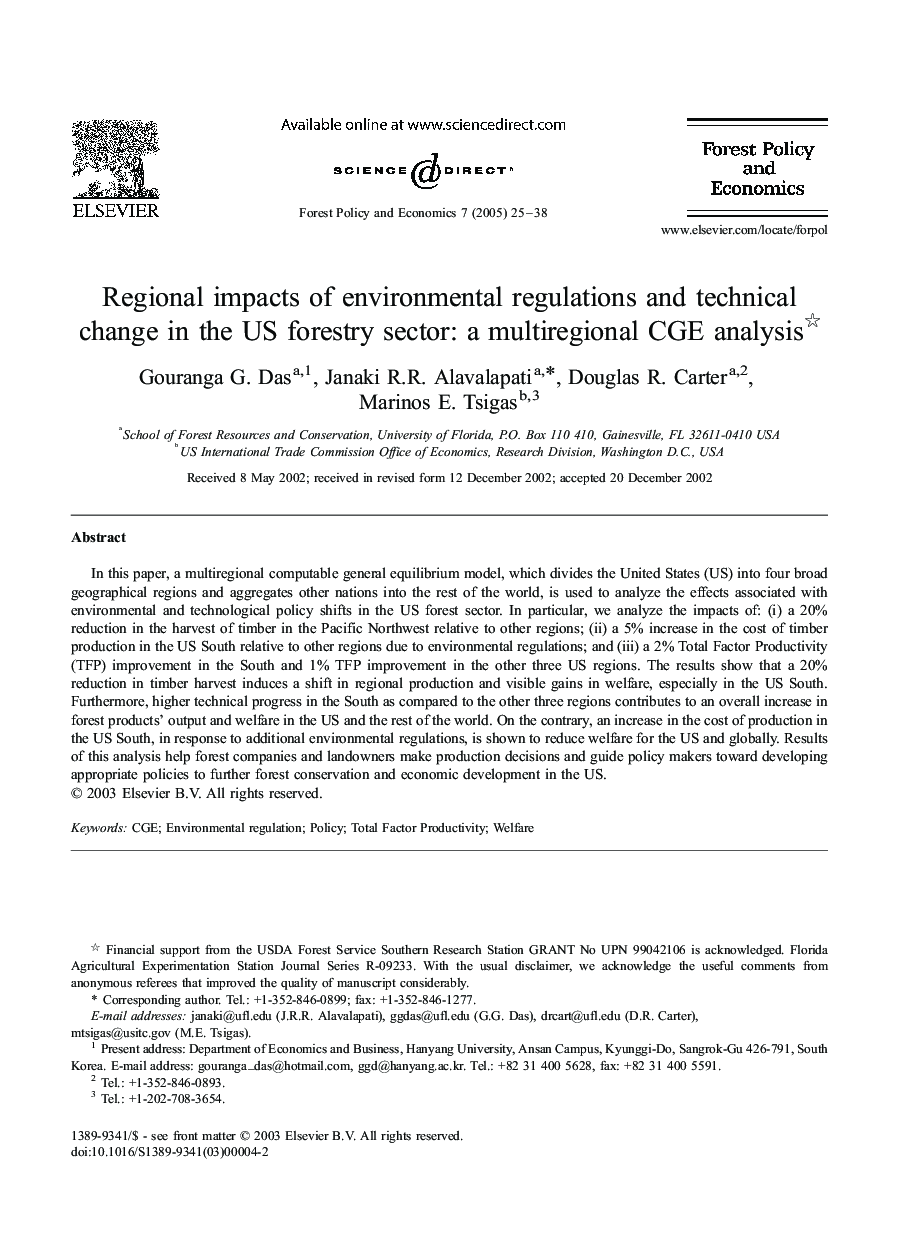| Article ID | Journal | Published Year | Pages | File Type |
|---|---|---|---|---|
| 10251086 | Forest Policy and Economics | 2005 | 14 Pages |
Abstract
In this paper, a multiregional computable general equilibrium model, which divides the United States (US) into four broad geographical regions and aggregates other nations into the rest of the world, is used to analyze the effects associated with environmental and technological policy shifts in the US forest sector. In particular, we analyze the impacts of: (i) a 20% reduction in the harvest of timber in the Pacific Northwest relative to other regions; (ii) a 5% increase in the cost of timber production in the US South relative to other regions due to environmental regulations; and (iii) a 2% Total Factor Productivity (TFP) improvement in the South and 1% TFP improvement in the other three US regions. The results show that a 20% reduction in timber harvest induces a shift in regional production and visible gains in welfare, especially in the US South. Furthermore, higher technical progress in the South as compared to the other three regions contributes to an overall increase in forest products' output and welfare in the US and the rest of the world. On the contrary, an increase in the cost of production in the US South, in response to additional environmental regulations, is shown to reduce welfare for the US and globally. Results of this analysis help forest companies and landowners make production decisions and guide policy makers toward developing appropriate policies to further forest conservation and economic development in the US.
Related Topics
Life Sciences
Agricultural and Biological Sciences
Forestry
Authors
Gouranga G. Das, Janaki R.R. Alavalapati, Douglas R. Carter, Marinos E. Tsigas,
